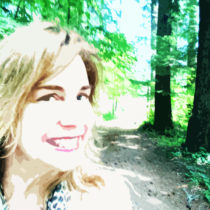Landscape Architecture for Landscape Architects › Forums › TECHNOLOGY › 3D Landscape Design
- This topic has 1 reply, 9 voices, and was last updated 16 years ago by
 nca.
nca.
-
AuthorPosts
-
September 30, 2008 at 12:33 am #176452
 Boyd ColemanParticipant
Boyd ColemanParticipantSomething I read and hear most often is that as LA’s we are usually the last to adopt a new form of “just-about-anything”. It seems that most architectural firms are moving in the direction of 3 dimensional design, but it seems in our market that landscape architecture hasn’t caught on yet. I wonder if it has something to do with the fact that we live in a relatively “flat” environment, i.e. the desert, and so there isn’t a perceived need for 3D design. Am I wrong? Is there something I’m just not understanding? Do you use 3D design in your office? If so, I’d love to hear your thoughts on it and perhaps see some of your work.
My experience to date is relatively limited to sketchup. I mostly use it for conceptual studies to see how a certain feature, like an entry monument, might look from different perspectives. I’ll be sure to post some pictures of some of my limited work soon. I just need to remember to copy the files my flash drive when I go home.
September 30, 2008 at 1:08 am #176460 ncaParticipant
ncaParticipantMy experience is generally that the latter stages of schematic design tend to happen in digital 3D if at all. IMO, there are just too many “checks” in the process of formulating an idea in your mind and processing it in 3D. I think programs like sketchup make it more intuitive for schematic design work to be studied in 3D, but more important is the process of “rapid-cycling.” Getting bogged down in placing digital trees or manipulating textures may be too right-brained to be an effective method for generating and developing ideas effectively. At the same time, I do see a place. I also see places, literally, that look like computer models. I generally do not prefer those places.
September 30, 2008 at 8:43 pm #176459 Frank VarroParticipant
Frank VarroParticipantI think a large part of the problem is also that as landscape architects, we work with things that are largely difficult to nearly impossible to model in 3d easily. When you are working on an architecture model, most things can be broken down into “flat” components, or at most a simple curve, that can be easily modeled. In landscape architecture you deal largely with topography that is made of flowing forms, trees that either render in 3d as a 2-dimensional face, or use thousands of polygons to look realistic, and curving paths.
This is part of the problem with AutoCAD in my mind as well. While it works wonders for architects, I have always found it difficult to create curves with the right scale for a biomorphic design in Autocad. I have much more success roughing out the curves by hand, then scanning and tracing those curves in AutoCAD.
Computers cannot really draw curves (You would think someone would have”fixed” that by now), they draw flat faces/lines, and you have to just make them small enough that the lines are not obvious. I think that is a large reason for the lack of landscape architecture modeling in 3d.October 14, 2008 at 2:59 am #176458 Ryland FoxParticipant
Ryland FoxParticipantI find that the reason landscape architects don’t use 3d design software for anything but visualisation is because of preconceptions, often the ones that are stated in the previous response.
Architects have taken 3d software far beyond just flat components. And computers can figure out immensely complicated curves using NURBS and t-splines. The issue is that people don’t experiment/try new softwares/bother looking.
In fact the best 3d softwares were developed by the aerospace industry because they were not able to hand draw as accurately as required, whereas a computer can.
Designing in 3d is immensely helpful, yes you can start from a sketch on trace for a fast concept but to understand a
surface or topography, being able to see if from all angles and adjust it as you want is time saving and helpful. For me drawing a bunch of perspectives isn’t that helpful and often inaccurate, plus it is only one view, static.Designing in 3d and then taking the documents you need from the 3d model is the correct way to integrate modeling in to the design process, as it is currently the technology is being under utilised. But it won’t be this way forever.
February 22, 2009 at 3:54 am #176457 Steve VoorheesParticipant
Steve VoorheesParticipantI would love to know what software programs you use to create and present your ideas to your clients in. I have used hand drawings and recently Photoshop software for presenting my concepts to clients and municipalities. But I would like to learn what 3d software programs LA’s find the most useful to our profession. Also, how is the best way to learn these software programs ie: seminars, blogs, community colleges classes etc..
May 21, 2009 at 12:38 pm #176456 Eric GilbeyParticipant
Eric GilbeyParticipantI agree that the number of landscape architects and designers using 3D is lower than we might expect. Vectorworks Landmark allows the designer to work both 2Dand 3D at the same time, in the same workspace. There is no export/import needed to do this. With just a click on an iso or perspective view, or set a 3D view, or even use the flyover feature to the view into any 3D view that can be spun around and viewed from any side. It is the same drawing environement, and the objects you draw in 2D are represented immediately, to scale, in the 3D views, and any changes done in 2D or 3D are immediatey affecting the other views…they are directly related, since they are the same objects. With Renderworks added in with Vectorworks Landmark, you would have the full range of rendering available from the simplest wireframe (and hidden line wireframe) to Photorealistic rendering, including sun angles and light effects. Other rendering techniques are possible in that range, such as OpenGL, Sketch, and Cartoon, just to name a few). The best thing about Vectorworks’ 3D is that an most of the cases where you use 3D objects and features, they can inherit information about the object or its materials, and they can be reported in worksheets, if your designs need that. This also helps in creating section views and details, as some of the work is already done for you, instead of recreating the drawings from scratch. With its ability to import and export DWG files, the 3D things created can still be useful to clients who need their files in this format.
May 26, 2009 at 6:40 pm #176455 Joshua KParticipant
Joshua KParticipantmy office has recently begun using artlantis for rendering sketchup models. it takes a while to learn the limitations and modelling techniques (i’ve just learned to make models as simple as possible, and add details through testures and shaders), however the results can be quite stunning. artlantis also supports revit and vectorworks.
if you are looking for a full 3d modelling/rendering/animation package, modo is supposed to be the best value around. it is developed by the original developers of lightwave 3d, and is around $800.
also just want to add the 3d object imports into photoshop extended cs4 add a whole range of new possibilties
July 15, 2009 at 2:05 am #176454 Linda W. JonesParticipant
Linda W. JonesParticipantThe area that I live in has many architects that have been using 3D Design for years. I have taken classes offered for architects to modernize my skills. Of course I want to only do landscape architectural work, but this is how I learn new futuristic and present day job skills. I get permission to do 3D landscape architectural work for my final projects. I also teach myself and get advanced skill help from people that I buy my software from. As an example, I bought software to design 3D objects for my landscape architectural designs out of England, and landscape design software out of New Zealand; Both are add-ons for my main software that does 2D and 3D work. My concept is to work from 3D first, and then do the 2D drawings later. This new concept is being used by architects in the San Francisco Bay Area.
You can see my work on this website where the pictures and videos are, or on my website at
http://webshots.com/user/lindawjones1It is true that landscape architects are the last group of people to change.
July 17, 2009 at 5:39 pm #176453 Bob LutherParticipant
Bob LutherParticipantThis is very similar to the discussions on hand graphics versus computer graphics. While Landscape Architects are not on the cutting edge of #D graphics and renderings, I know many firms that use 3D software everyday. I use SketchUp on 75-80% of my projects. I create signage, entry monuments, import grading and see how the shape of the contours matches with the design intent, I set up rear yard models with photos from the developed pads to see sight lines and views, see how planting will work with various architectural elements, layout wireframes to sketch over and then do a hand sketched perspective, the list goes on and on. The idea is not if you use 3D it should be how do you use 3D, I have seen a lot of wonderful examples of landscape architecture from loose concept forms to photo real renderings of buildings, signage, courtyards, patios, and pools. Because I use SketchUp I tend to promote SketchUp, but the one thing a lot of people do not know is that SketchUp is only one piece of the puzzle many great modelers export there models to VUE, Podium, VIZ, Artlantis, Piranesi, or other render software to convert their model into the image they desire.
-
AuthorPosts
- You must be logged in to reply to this topic.


